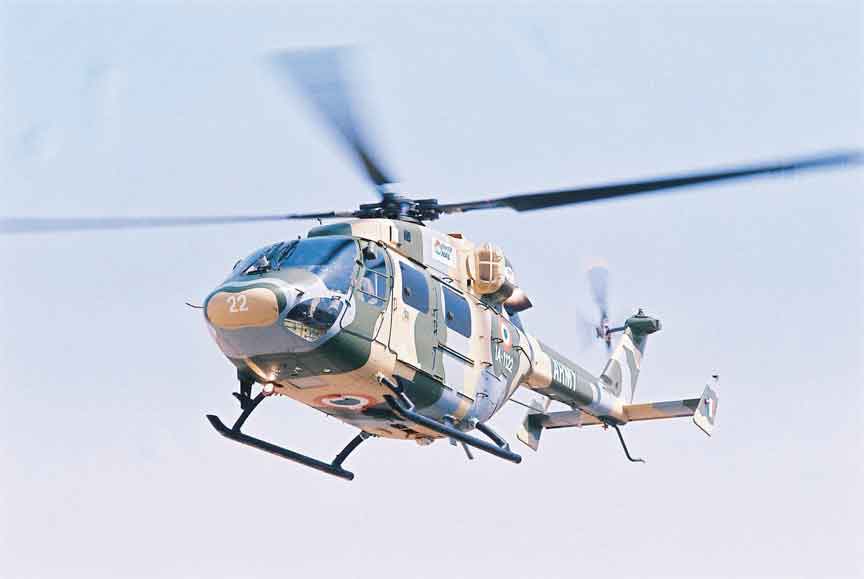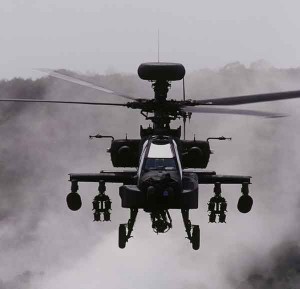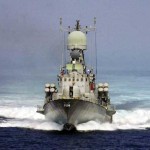Indian Navy
The first helicopter to be inducted into the Indian Navy was the Chetak in 1964. A versatile platform, the Chetak helicopter was employed by the Navy for Search and Rescue, personnel and equipment transfer, communications and Medium Altitude Torpedo Carrying Helicopter (MATCH) role. The Sea King was inducted in 1971 and was used initially for anti-submarine patrols and later for transporting commandos as well. In the early 1980s, the Navy acquired the Soviet Kashin class destroyers and along with them inducted Kamov Ka-25s in the Anti Submarine Warfare (ASW) role. The Ka-25 proved to be a good helicopter and subsequently two other Kamov helicopters (Ka-28 and Ka-31) were also inducted.
The Navy is also looking for 56 utility helicopters to replace its current holding of around 60 Chetaks…
The Navy’s total holding of helicopters is 217 and it hopes to double that number over the next ten years. The Navy is also in the process of procuring 16 Multi-Role Helicopters as a replacement for its Sea Kings. Indeed, some Sea Kings were being decommissioned while the RFP for 16 new multi-role helicopters was released. The final choice out of the two shortlisted helicopters, Sikorsky MR60R and Eurocopter NH-90, is yet to be made. The storm that erupted over the AgustaWestland contract has put the decision on hold. There has been some talk about a global request for information for a possible procurement of 120 multi-role helicopters in the future but no tender has yet been floated by the Navy.
Apart from the Sea King replacement, the Navy is also looking for 56 utility helicopters to replace its current holding of around 60 Chetaks. An RFP has been issued and the date of submission of quotations was January 07, 2014, with the date of entry into service slated for early 2016. Eight OEMs have been approached – AgustaWestland, Bell, Eurocopter, Kamov, Kazan, MD Helicopters, Sikorsky and HAL. HAL is expected to tweak its LUH design to meet the Navy’s twin-engine requirement. The RFP stipulates a four-seat twin-engine helicopter with a crew of two pilots and one assistant/winch operator, with foldable rotor blades and a maximum take-off weight of 4,500 kg or less. The range required is 200 nm with the maximum payload of 500 kg and the offensive capability for ASW role requirement includes a light torpedo or depth charge and a mount for 12.7-mm machine guns or two rocket launchers on either side. Some missions to be undertaken by the new LUH fleet would include search-and-rescue, casualty evacuation, sling loads, limited observation/surveillance and anti-terrorism/anti-piracy missions with small arms. The RFP states that the helicopter should be able to operate in adverse weather by day and night from small decks as well as the larger decks of aircraft carriers.
Meanwhile, the first Dhruv ALH squadron has been commissioned in November 2013 at Kochi. Fitted with a countermeasures suite comprising radar and missile detectors, infrared jammer, chaff and flare dispensers, the naval variant Dhruv can carry two torpedoes or four anti-ship missiles. It is to be used for Search and Rescue (SAR) and will be one of the few helicopters capable of night SAR over sea. It is also planned to be used for heliborne operations and armed patrol with night vision devices. The latter role is an imperative dictated by the current Low Intensity Maritime Operations (LIMO) scenario. The newly inducted carrier INS Vikramaditya is to carry the Ka28 and Ka31 helicopters for ASW and maritime surveillance roles. The Ka31 has modest AEW capabilities as well. The Navy is to receive four additional Ka28s for ASW and five Ka31 radar picket helicopters for the INS Vikramaditya. These will supplement nine Ka31s delivered between 1999 and 2004 and 16 Ka28s inducted in the late 1980s.
The technological advances made by India are negated by the need to import equipment needed for the defence of the nation…
Needs and Wants
Air forces around the world invoke the argument of indivisibility of air power to construct their case for custody of all air assets. However, experience in actual operations and constant clamour by land and naval forces, have led to the acquisition of substantial aircraft inventories by these two forces. In the case of India also, the numbers tell this story. The Army and the Navy together have roughly the same number of helicopters as the IAF and their numbers continue to increase. The optimist could hope that, with a combined defence head dispensation whatever be the title given to that functionary, there would be a better mutual understanding amongst the three services on the issue of ownership of military helicopters. One would expect that inter-service rivalry would be relegated to the background in the context of national interest.
Meanwhile, none of the three services are content with their present fleet strengths. The IAF feels that the vast expanse of the country calls for a much larger helicopter fleet while the Army, which forever feels that the best way to utilise helicopters is to have them “under command”, would like to assign helicopter flights down to Division level. Needless to say, these perceptions give rise to feelings of inadequacy of helicopter resources. It would not be inaccurate to say that be it peacetime, operational exercises or actual operations, each service feels the need for some more helicopters. Could this gripe be redressed? The simple answer is ‘yes’ and the way it could be done is by procuring more helicopters. However, rotary wing platforms tend to be horribly expensive especially when purchased from foreign OEMs. The last decade has seen HAL helicopters come to the three services, who are yet to whole heartedly embrace HAL products as the answer to their needs.
Most of HAL’s projects have seen delays, some unacceptably and inordinately so…
Delays
The RFP for RHS was first floated in 2008 and again in 2009. Eurocopter AS 550 C3 Fennec and Russian Kamov Ka226 were the final contenders and the arrangement would have involved licence production by HAL. However, the finalisation of contract has been delayed due to “technical reasons” and unearthing of scams recently. India is the world’s largest arms importer for the last three years now and the trend looks likely to continue as the Western world contemplates defence budget cuts. The technological advances made by India are negated by the need to import equipment needed for the defence of the nation.
In the context of helicopters, HAL is the only Indian OEM on the scene. The establishment’s preoccupation with public sector prominence in all heavy industries has perpetuated this state of affairs. The result has been the monopoly of HAL which has meant that there is no motivation for HAL to excel in helicopter design and production. Were the government to relax rules to permit private sector participation albeit with foreign investment, the changed situation may either propel HAL to higher levels of productivity or expel it from the competitive market altogether. This change is inevitable in the long run but for the time being, HAL lobby and its parent ministry appear to be calling the shots. This is despite the fact that HAL’s delivery record has been abysmal.
In 2008, HAL managed to get an export order through a competitive bidding process for providing seven Dhruvs to the Ecuadorian Air Force. Three years later, Ecuador was forced to impose a penalty of Rs 6.16 crore on HAL for delay in delivery. Although the Dhruv is a design already in production, HAL could not get its act together to ensure timely delivery. HAL’s track record has pushed Dassault into openly stating that Reliance and not HAL, was their preferred business partner for the Rafale project in India. Needless to say the idea was rejected by the Indian establishment.
Most of HAL’s projects have seen delays, some unacceptably and inordinately so. The armed forces, all of whom are HAL’s customers albeit not out of choice, have also been unhappy with delays and cost overruns and are stridently seeking the end of HAL’s monopoly. The Chief of the Air Staff had written about these delays to the MOD which is the parent ministry for HAL and the Ministry understands the predicament. Mystifyingly, its endeavour to draw in private players for the supply of transport aircraft to the armed forces invited an offensive campaign by Praful Patel, Minister for Heavy Industries, no doubt lobbied for by HAL. The LUH project mentioned earlier has also been one of the enormously delayed projects with repercussions for all the three services as all of them use the ancient Chetaks and Cheetahs.
The LUH project has also been one of the enormously delayed projects with repercussions for all the three services…
Concluding Remarks
In terms of size, the Indian armed forces are amongst the largest in the world but in terms of equipment, they are lamentably lagging behind the leading edge of weapon systems and aircraft technology. In the area of military helicopters as well, India is forced to import most of the requirements from foreign vendors while the regulatory framework panders to HAL monopoly. Should the indigenous helicopter design and production capability be untethered from HAL and opened to private enterprise, there would be two advantages.
Firstly, the delays and inefficiencies would disappear and secondly, the cost of leading edge technologies and products would reduce not just because of indigenous production, but also because of the possibility of export and economy of scale. With a large border with China and Pakistan, the use of helicopters designed decades ago, is criminal neglect of the nation’s defence needs. The concerns raised by General V.K Singh on the military preparedness of the nation to meet the challenges inherent to two inimical neighbours comes to mind in this context. Meanwhile, the gap widens by the day, especially vis-à-vis China.








I agree 100% with your views Grp. Capt. Sachdev that the mostrous HAL should have been disbanded decades ago. India still being a third world country, cannot afford to waste thousands of crores of taxpayer money on inefficient and uesless companies like HAL. I have gathered from other reports that the increased crashes of Mig-21 here due to the airframes manufactured under license by HAL. They have not only caused useless low quality production of the cheapest air-interceptor but also caused massive delays and lower than promised quality of other aircraft like Jaguar DPSA, Mig-29 and helicopters. Most of the so-called engineers come to HAL, ADA and NAL only to work on internships and take govt. exp. letter and to go to foreign countries. Shame on them all. HAL should triple their production schedule and look upto Chinese airplane and helicopter manufacturers to see how advanced planes they make. This tripling of production will create the reqd force levels as well as make up for replacing older ones and attrition. HAL, are you listening?